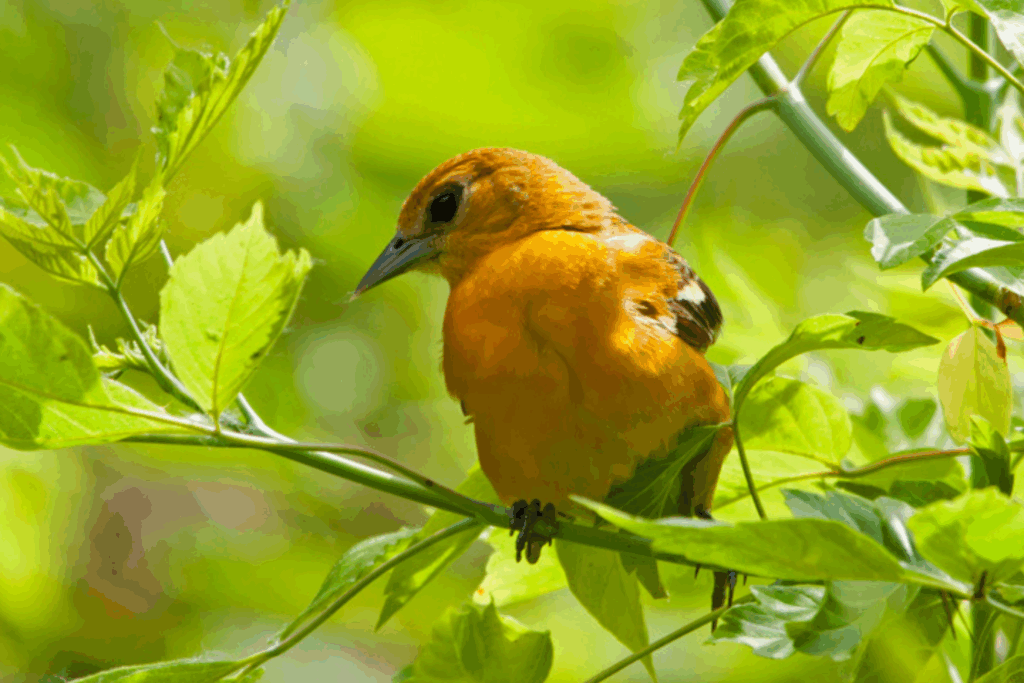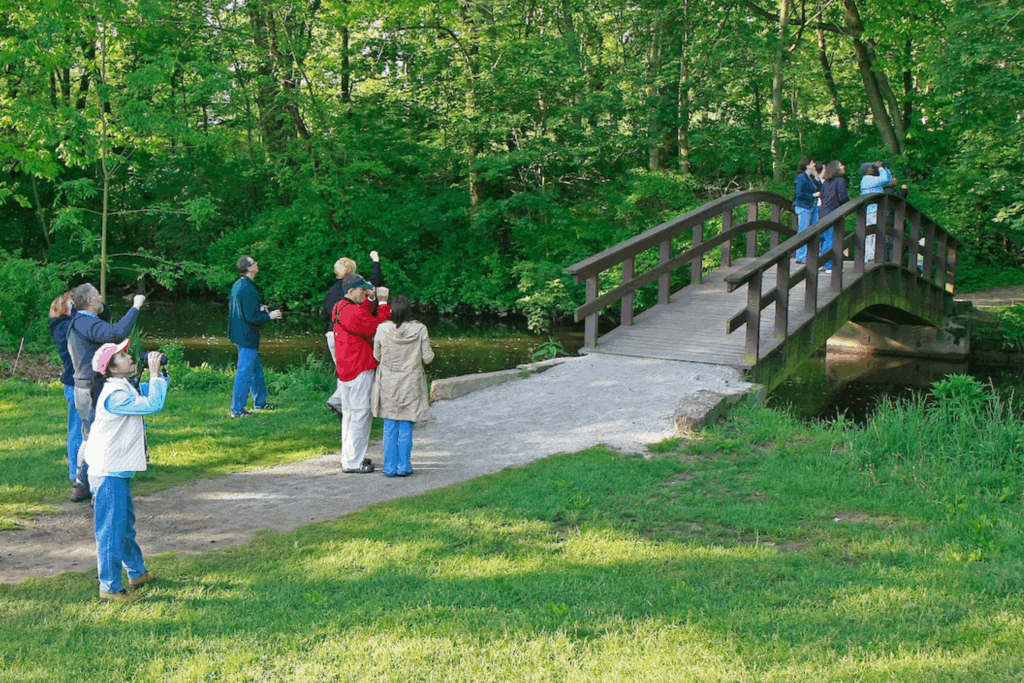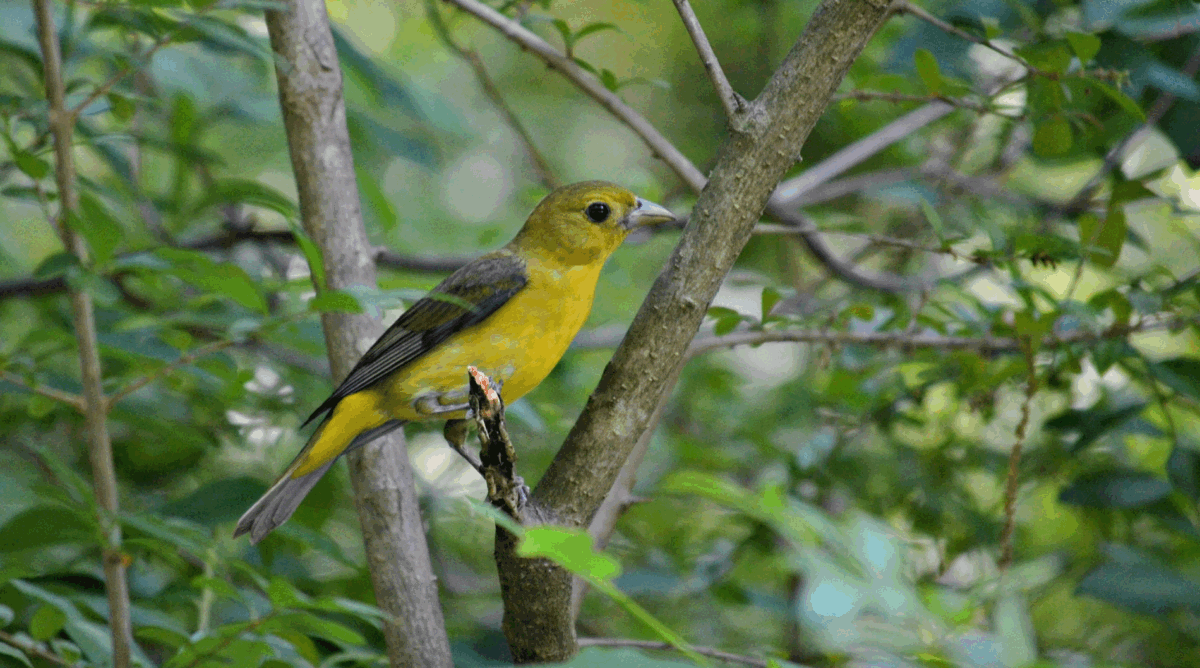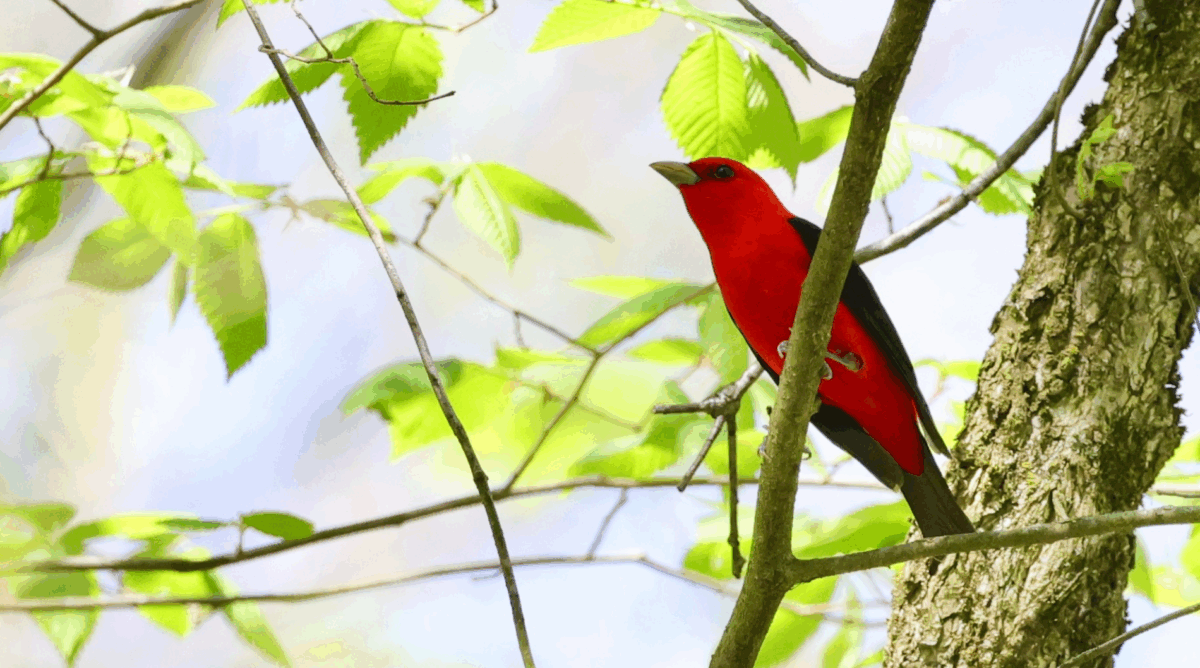With peak spring bird migration this month, it will be tempting to go out and see the eye-catching colors of birds who are only here a few months out of the year. It can be easy to overlook birds of more muted colors who blend in more with their surroundings.
Flashy feathers vs. camouflage
While not every bird has different plumages between males and females, in those who do, this trait is called sexual dimorphism. This refers to the difference in appearance and size of species based on sex.
A good rule to go by is to not think of female birds as being duller, but instead think of the males as more vibrant. There are often key features on both sexes that give away identification. Take the black-throated blue warbler for example. The female is neither black nor blue, but both males and females have a vibrant patch of white on their wings.
These birds are not different colors just for fun, but rather for survival. A male who has flashier colors is more successful in finding a mate. On the other hand, a female who is better camouflaged is harder to spot by predators and therefore can keep her and her nest safe.
Birds are often named after their vivid plumages, though the plumage in question is often that of a breeding male, which makes the name arbitrary for the female. Take a scarlet tanager or ruby-throated hummingbird for example. Scarlet tanager females are a yellowish green and ruby-throated hummingbird females have a white throat. There are a few lucky exceptions where a colorful name coordinates with the female, like the common yellowthroat and chestnut-sided warbler.
Listen closely
Among the many ways to name a bird, one naming convention for both sexes is one based on sound. The eastern whip-poor-will, eastern wood-pewee and gray catbird are all named after their song or call. While male birds are well-known for their symphonies to attract mates, females of over 60 percent of species sing. While 60 percent may not seem like much, many birders today were taught that only male birds sing.

Female birds sing for many of the same reasons that males do, including during territorial conflicts (females defend their areas, too!), communication with mates and duetting. Prothonotary warblers, common yellowthroats and Baltimore orioles are among many species to see and hear this spring.
But how did we go so long thinking female birds didn’t sing?
Bird bias in research
For decades, male birds have been the standard for research. Why? It’s likely a combination of reasons — male birds can be more vibrant, louder and more territorial. Plus, humans’ own internal biases against women can impact areas of research. Similar to human males and females, just because birds are members of the same species doesn’t mean they have the same needs. By researching both male and female birds, we can better advocate for and conserve the species as a whole.
Take the near-threatened golden-winged warbler for example. Male and female birds of between one- and two-thirds of migratory species, like the golden-winged warbler, have different non-breeding habitats. If only one habitat is protected, then only half the population is protected.
In the case of the golden-winged warbler, the males overwinter in forests at higher elevations while the females overwinter at forests of lower elevations. These low-elevation forests are more vulnerable to habitat destruction, leading to population declines. If both habitats are not protected, it can threaten a species’ survival.
Celebrate Female Bird Day
While there has been a dedicated increase in research in recent years, there is still a lot of work to be done. But you can help!
Female Bird Day, a weekend dedicated to the appreciation and study of female bird behavior and identification, is May 24 – 26 this year. So, take some time to intentionally seek out female birds this migration — it is well worth the challenge.

Join an upcoming program in your Metro Parks to appreciate birds and celebrate their uniqueness or learn how to welcome them into your Wild Back Yard:
- Morning Meadow Hike – May 10, 9 – 10:30 a.m., Munroe Falls Metro Park (Tallmadge Meadows Area)
- Homegrown Habitats: From the Ground Up – May 15, 6:30 – 8 p.m., F.A. Seiberling Nature Realm (Visitors Center)
- Native Plant Festival – May 17, 10 a.m. – 4 p.m., Munroe Falls Metro Park (Lake Area)
- Spring Bird Stroll – May 24, 8 – 10 a.m., Cascade Valley Metro Park (Valley View Area)
- Women in Birding Hike – May 31, 9 – 10:30 a.m., Firestone Metro Park (Tuscarawas Meadows Area)
- Summer Census Bird Walk – June 6, 7:30 – 10 a.m., Munroe Falls Metro Park (Tallmadge Meadows Area)
- Bank Swallow Stroll – June 7, 10 – 11 a.m., Cascade Valley Metro Park (Overlook Area)
- Queer Birders Walk – June 7, 1:30 – 3:30 p.m., Silver Creek Metro Park (Lake House Area)
- Homegrown Habitats: Sun Lovers – June 19, 6:30– 8 p.m., F.A. Seiberling Nature Realm (Visitors Center)
- Nature Saunter – June 27, 12 – 2 p.m., Liberty Park (Tinkers Creek State Nature Preserve)

